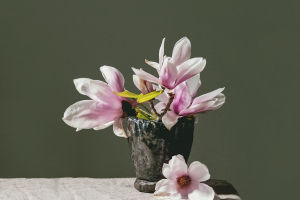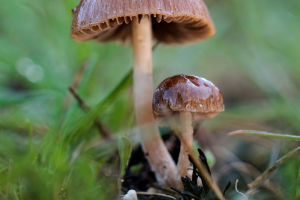Tulips are a perennial herbaceous plant native to Central Asia, particularly the mountainous steppes of present-day Kazakhstan, Uzbekistan, and Kyrgyzstan.
In this vast land, tulips have gradually won people's affection throughout history with their unique beauty and tenacious vitality.
In the early 17th century, the Netherlands experienced the most famous “Tulip Mania” in history. This financial frenzy began with the commercialization of tulip cultivation and sales. During that period, the prices of rare tulip varieties soared, with some tulips even valued as much as a luxurious house. People frantically speculated on tulips, hoping to make huge profits by reselling them.
However, this mania was unsustainable. In 1637, the tulip price bubble burst, leading to bankruptcies for many, and this turmoil had a profound impact on Dutch society and economy. Tulip Mania is considered one of the earliest financial bubbles in history, serving as a reminder of the risks of blind speculation.
Tulip plants typically grow between 15 to 60 centimeters in height, with strap-shaped, usually gray-green leaves with smooth, hairless edges. Tulip flowers have six petals and come in a wide range of colors, including red, yellow, pink, purple, white, orange, and multi-colored varieties. The flowers are typically cup-shaped or bell-shaped, but depending on the variety, they may also appear star-shaped, iris-like, or double-petaled.
Tulips primarily reproduce through bulbs, commonly referred to as "bulbs." Each autumn, growers plant the bulbs in the soil, and after a cold winter dormancy, the bulbs sprout and grow as temperatures rise in the spring, eventually blooming. Besides bulb propagation, tulips can also reproduce through seeds, but this method is time-consuming, and the characteristics of the new plants may differ from the parent plants. Therefore, seed propagation is mainly used for breeding research.
In Europe, especially in the Netherlands, tulips are endowed with rich cultural symbolism. They symbolize beauty, nobility, and the arrival of spring. In the Netherlands, tulips are often associated with the national image. The Keukenhof Gardens in the Netherlands hold the world-famous tulip exhibition every spring, attracting millions of visitors.
Tulips also have a broad presence in the arts. Whether in classical paintings or modern design, tulips are frequently a subject of creation. Seventeenth-century Dutch painters like Jan Brueghel and Rachel Ruysch created many still-life paintings featuring tulips, capturing their delicate texture and varied colors, presenting a serene and noble beauty.
Additionally, tulips have their place in literature. For example, the French writer Alexandre Dumas' novel The Black Tulip tells a thrilling story centered around a rare black tulip. In the novel, the black tulip symbolizes not only beauty and rarity but also pure and flawless love.
Today, tulips have become a vital member of the global flower market. The Netherlands remains the center of tulip cultivation and export, producing tulip flowers and bulbs that are exported worldwide each year.
Modern tulip cultivation techniques have become highly advanced, allowing growers to precisely control the growth cycle of tulips by regulating temperature, light, and soil conditions to meet the needs of different markets. Additionally, tulips are widely used in landscape design and interior decoration, becoming an indispensable part of people's lives.
Tulips have won people's affection not only with their charming appearance and rich colors but also as witnesses to history, culture, and economy. Today, tulips continue to bloom worldwide, adorning our lives with their unparalleled charm and continuing to write their legendary story.


